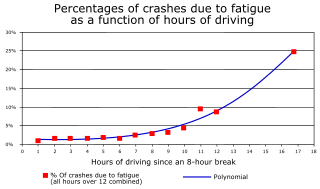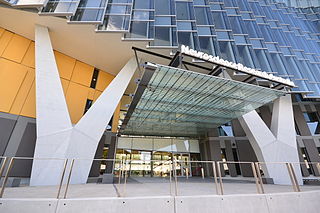Related Research Articles

The University of Adelaide is a public research university located in Adelaide, South Australia. Established in 1874, it is the third-oldest university in Australia. The university's main campus is located on North Terrace in the Adelaide city centre, adjacent to the Art Gallery of South Australia, the South Australian Museum, and the State Library of South Australia.

Central Queensland University is an Australian public university based in central Queensland. CQUniversity is the only Australian university with a campus presence in every mainland state. Its main campus is at Norman Gardens in Rockhampton, however, it also has campuses in Adelaide (Wayville), Brisbane, Bundaberg (Branyan), Cairns, Emerald, Gladstone, Mackay, Melbourne, Noosa, Perth, Rockhampton City, Sydney and Townsville. CQUniversity also has delivery sites to support distance education in Biloela, Broome, Busselton, Charters Towers, Karratha and Yeppoon, and partners with university centres in Cooma, Geraldton and Port Pirie.
Shift work is an employment practice designed to make use of, or provide service across, all 24 hours of the clock each day of the week. The practice typically sees the day divided into shifts, set periods of time during which different groups of workers perform their duties. The term "shift work" includes both long-term night shifts and work schedules in which employees change or rotate shifts.

Belair is a suburb in the south eastern foothills of Adelaide, South Australia at the base of the Mount Lofty Ranges.

The South Australian Museum is a natural history museum and research institution in Adelaide, South Australia, founded in 1856 and owned by the Government of South Australia. It occupies a complex of buildings on North Terrace in the cultural precinct of the Adelaide Parklands. Plans are under way to move much of its Australian Aboriginal cultural collection, into a new National Gallery for Aboriginal Art and Cultures.

Glen Osmond is a suburb of Adelaide, South Australia in the City of Burnside which is in the foothills of the Adelaide Hills. It is well known for the road intersection on the western side of the suburb, where the South Eastern Freeway from the Adelaide Hills and the main route from Melbourne splits into National Route A17 Portrush Road, Glen Osmond Road, Adelaide and state route A3 Cross Road west towards the coast and southern suburbs.

Roseworthy Agricultural College was an agricultural college in Australia. It was 50 km (31 mi) north of Adelaide and 7 km (4.3 mi) west of Roseworthy town. It was the first agricultural college in Australia, established in 1883. It is now part of the University of Adelaide.
SA Pathology,, is an organisation providing diagnostic and clinical pathology services throughout South Australia for the public health sector. The headquarters are in Frome Road, Adelaide, and it has many patient collection centres and numerous laboratories located throughout South Australia.
Fatigue is a major human factors issue in aviation safety. The Fatigue Avoidance Scheduling Tool (FAST) was developed by the United States Air Force in 2000–2001 to address the problem of aircrew fatigue in aircrew flight scheduling. FAST is a Windows program that allows scientists, planners and schedulers to quantify the effects of various work-rest schedules on human performance. It allows work and sleep data entry in graphic, symbolic (grid) and text formats. The graphic input-output display shows cognitive performance effectiveness as a function of time. An upper green area on the graph ends at the time for normal sleep, 90% effectiveness. The goal of the planner or scheduler is to keep performance effectiveness at or above 90% by manipulating the timing and lengths of work and rest periods. A work schedule is entered as red bands on the time line. Sleep periods are entered as blue bands across the time line, below the red bands.

Fatigue is a major safety concern in many fields, but especially in transportation, because fatigue can result in disastrous accidents. Fatigue is considered an internal precondition for unsafe acts because it negatively affects the human operator's internal state. Research has generally focused on pilots, truck drivers, and shift workers.
The South Australian Research and Development Institute (SARDI) is the principal research institute of the Government of South Australia, with a network of research centres, laboratories and field sites both in metropolitan Adelaide and throughout South Australia. SARDI is part of Primary Industries and Regions SA.

Neuroscience Research Australia is an independent medical research institute based in Sydney, Australia. Previously called the Prince of Wales Medical Research Institute, the institute relaunched as Neuroscience Research Australia on 1 June 2010. NeuRA is accredited by the National Health and Medical Research Council.
The Ehrenberg-Bass Institute for Marketing Science is the world’s largest centre for research into marketing. Based at the University of South Australia in Adelaide, Ehrenberg-Bass is an independent, not-for-profit research institute. Previously named the Marketing Science Centre, it was elevated to institute status in 2005. It is the first university institute devoted to marketing science. It was renamed after two marketing academics, Professor Andrew Ehrenberg and Professor Frank Bass. During their careers, both Ehrenberg and Bass have championed the development of simple generalised laws that can be described mathematically and can be widely applied.
Professor Herbert George Andrewartha, BS (UWA), MAgSc (Melb), DSc (Adel), FAA, was a distinguished Australian research scientist in the fields of entomology, biology, zoology and animal ecology.

Torrens University is an Australian international private, for-profit university and vocational registered training organisation, with campuses in Sydney, Melbourne, Brisbane, Adelaide, Blue Mountains, Australia, Auckland, New Zealand, and Suzhou, China. As of 2022 the university has about 21,000 enrolled students.
West Adelaide was an electoral district of the House of Assembly in the Australian state of South Australia from 1862 to 1902.
Jennie Louise Ponsford is an Australian neuroscience researcher at Monash University, Victoria who has a special interest in Traumatic Brain Injury (TBI). Jennie is a clinical neuropsychologist, whose work is focused on developing a deeper understanding of the negative consequences of TBI, particularly those related to fatigue, sleep disturbance, attentional, memory and executive problems, psychiatric and behavioural disturbances and sexuality, and the development of rehabilitation interventions to improve long term recovery and quality of life in individuals with TBI.

The International Civil Aviation Organization (ICAO) defines fatigue as "A physiological state of reduced mental or physical performance capability resulting from sleep loss or extended wakefulness, circadian phase, or workload." The phenomenon places great risk on the crew and passengers of an airplane because it significantly increases the chance of pilot error. Fatigue is particularly prevalent among pilots because of "unpredictable work hours, long duty periods, circadian disruption, and insufficient sleep". These factors can occur together to produce a combination of sleep deprivation, circadian rhythm effects, and 'time-on task' fatigue. Regulators attempt to mitigate fatigue by limiting the number of hours pilots are allowed to fly over varying periods of time.

Philippa Helen Gander is a New Zealand sleep researcher. In 2021, she was conferred with the title of emeritus professor by Massey University, where she had been inaugural director of the Sleep/Wake Research Centre until stepping down from that role in 2019.
References
- ↑ "CQU's research dream team" . Retrieved 25 September 2016.
- 1 2 3 "About Us". Appleton Institute. CQUniversity Australia. Retrieved 25 September 2016.
- ↑ "Research into Sampson Flat fires shows residents are 'underprepared'". 27 October 2015. Retrieved 25 September 2016.
- ↑ Horsetalk.co.nz (11 May 2015). "Call for standardised reporting in large-animal rescue cases". Horsetalk.co.nz. Retrieved 25 September 2016.
- ↑ Williams, Sean. "To Sleep No More (Perchance To Write)" . Retrieved 26 September 2016.